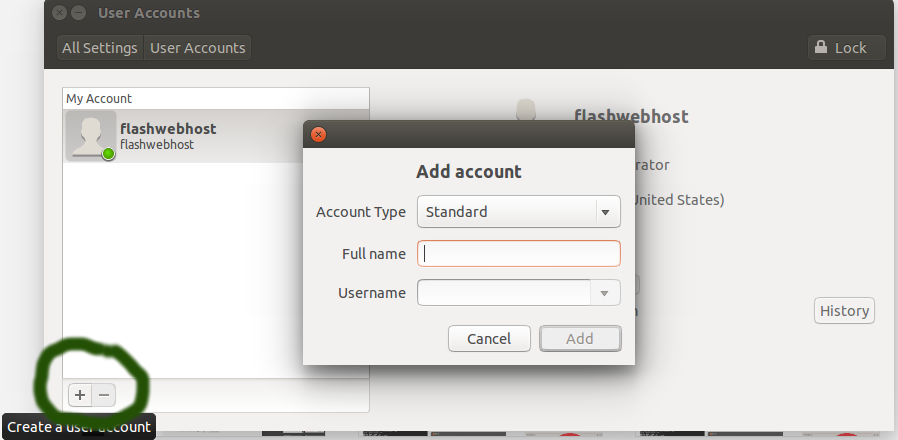
Unlike users, the group information is stored in a file named group that can be found at /etc/group. It is particularly useful if multiple teams are using the same system. You basically gather several users and grant them joint privileges or access. In Linux, you also have the option to create groups. If you only want to view the name of the users, you can run this special command: cut -d : -f 1 /etc/passwd Listing User Groups on Linux Refers to the shell that users use to sign in to the system. For users other than root, the folder will be /home/username.
Ubuntu add user full#
Contains a short description of the user, usually filled out with users’ full name. Like User ID, it is unique for every user. 0 - User ID, which is unique for each registered user.


In the output above, each line corresponds to a user.
Ubuntu add user how to#
However, before configuring those settings, it is better to learn how to list users on Ubuntu VPS or server. What’s more, you can adjust configuration and administrative rights to modify your system and secure your data by preventing any harmful anonymous process. System administrators can take advantage of Ubuntu’s complete features to control how users and groups interact with the system.įor instance, you can grant certain users and groups to access specific files and folders. This means that oftentimes, a Linux-based system is used by multiple users at the same time.įor that reason, managing these users and groups is a day-to-day task. Linux is popular among tech research groups and development communities because it is suitable for team-based projects.


 0 kommentar(er)
0 kommentar(er)
